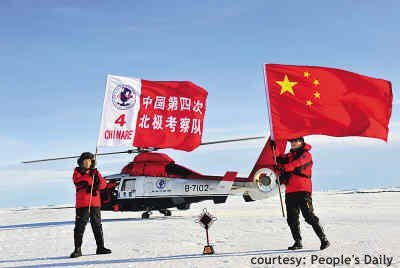Explaining China’s Politics in the Arctic

Over the past decade, the Arctic has moved into the focus of world politics. As Arctic sea ice melts at a rapid rate, regional and international actors are strengthening their local involvement thus further focusing international attention on the region. External Arctic actors, primarily the European Union and the People’s Republic of China, but potentially also India and South Korea, aim to profit from the region’s various prospects.
Geopolitical dynamics in the Arctic include the political consequences of climate change in the region; the subsequent rise of economic opportunities; and the increase of international competition on one hand, and multilateral co-operation on the other. Against prevailing perceptions, geoeconomics only plays a subordinate role in China’s Arctic endeavor. While the Arctic may hold significant economic potential, its riches will not feature prominently in China’s future economic calculations. Instead, the driving force of China’s interest in the region is based on geopolitical considerations, including enhancing its ability to exert influence in the Arctic through regional strategic partnerships. China’s recent political and economic efforts in the region indicate that China regards partnerships with smaller Arctic states as not only key to gaining influence in the Arctic, but also to enhancing its standing and role internationally.
[maxbutton id=”1″ url=”https://www.thearcticinstitute.org/wp-content/uploads/2019/04/From-Great-Wall-to-Great-White-North-Explaining-Chinas-Politics-in-the-Arctic.pdf”]
The Long Post on “China in the ‘Great White North’” was originally published by European Geostrategy on August 17, 2012.